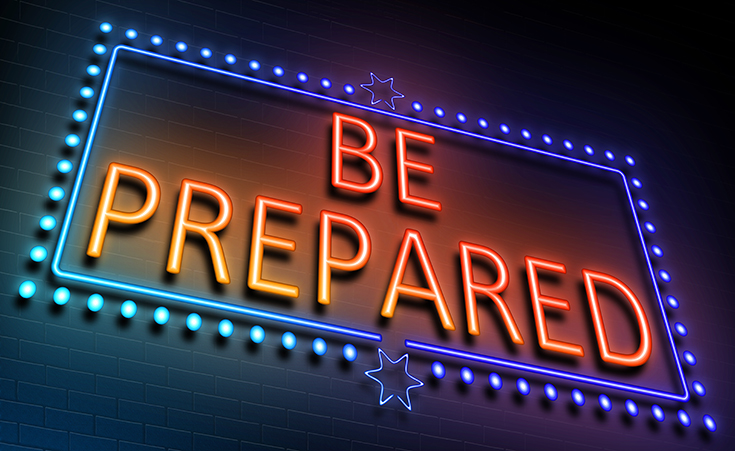Online learning – Ready Calgary: Community preparedness
Robert Fagan looks at another free emergency preparedness resource for the Crisis Response Journal.

(Image: Samantha Craddock/123rf)
Happy New Year! I hope you’ve made a resolution and commitment to improve your readiness and preparedness levels for yourself and your family in all areas of your home, workplace, and community.
The year 2019 has already proven to be a turbulent one for many, so there’s no time like the present to be better prepared. It’s fitting during the month of January to discuss some colder issues for those in the Northern Hemisphere, and who better to do that than our wintery weather expert friends in the City of Calgary in Alberta, Canada.
Ready Calgary is a community preparedness programme developed by the Calgary Emergency Management Agency (CEMA) for Calgarians. However, it has a very broad preparedness perspective and could be useful to anyone, having been designed to inform, educate and build resiliency to the impacts of emergencies. The course encourages safety at home, in the workplace, neighbourhood and community.
I really like the fact that the overall course implores citizens to: “Become a leader in your community and help empower a resilient network of prepared citizens,” and the course content reflects this philosophy.
The programme is divided into two parts. Section One: Fundamentals of Emergency Preparedness for Individuals and Families is found online and helps participant learn how to prepare the home and family for an emergency. This course is free and takes about an hour to complete. You’ll need to register first through a fairly straightforward process to get a password. Successful participants will receive an official certificate of completion when finished.
Section Two: Emergency Preparedness In Your Neighbourhood For Community Leaders is an in-person three-hour workshop held at various times and locations in Calgary. But, you can take section one (the online course) without any expectation of having to do section two.
There are a lot of good reasons to take this course. I was amazed at the comprehensiveness and breadth of issues covered in such a short course. The videos and audio are well put together, the sections transition smoothly, and the course is quite the complete package.
Good preparedness programmes start with an analysis of risks, threats and hazards, as does this one. Considering some of the largest disasters to befall Canada have taken place in Alberta, this is only fitting. The module on individual and family preparedness starts with identifying and mitigating hazards at home and moves quickly to emergency action plans for home, work, children and pets. This section also covers insurance needs, the 72-hour kit, and testing your plans.
Next – and a real strength of the course – participants move from the closed circle of family considerations to the broader circle of community, or neighbourhood, preparedness. This is where inclusivity and true community resilience come into play as the course covers information inaccessibility along with functional and access needs issues. A nice innovation at this juncture is the development of WIMBY (What’s in My Backyard), which is an empowerment tool to teach people how to take charge of their own situation and understand the resources and facilities available to them close by in an emergency.
Many courses stop at this point and leave response and recovery to the professionals; however, this course makes it clear that people can’t outsource their own safety and security and laypersons must be involved in these activities. The course quickly moves through what to do during the most prevalent emergencies in Calgary, which are summer storms, influenza/pandemics, chemical releases, downed power lines and, of course, winter storms. I think they should have included long-term power outages as a separate emergency, but nonetheless this is a very good response list.
A unique and tactical aspect of the course is a discussion of immediate actions such as: Assess your situation; seek clean air; isolate hazardous substances; protect yourself from debris; signal rescuers; and shelter-in-place or evacuation, along with evacuation procedures. These are unpleasant things to think about, but so very necessary in real-world planning.
Lastly, the course covers recovery in many of its forms in terms of what this looks like for the average citizen and the ‘new normal’. It touches on psychological care, insurance claims, financial aid, community support, replacing documents, self-care, stress and community volunteer and donation opportunities. While much of this is Calgary specific, knowing some of the basics and trends is important for everyone.
All in all, I think you’ll be very pleased with this course. t’s an hour well spent, full of lots of information, helpful tips, and great concepts easily committed to memory and operationalised into community planning.
Don’t forget the resources tab in the upper right, which has lots of great downloadable and detailed planning shells and information sheets on various topics.
This course should be taken by anyone concerned for their family’s safety. It’s also helpful for those laypersons who have a broader reach into their neighbourhoods and communities and want to be involved at a slightly higher level of planning and preparation.
Train today; live tomorrow!
Robert Fagan, 25/01/2019